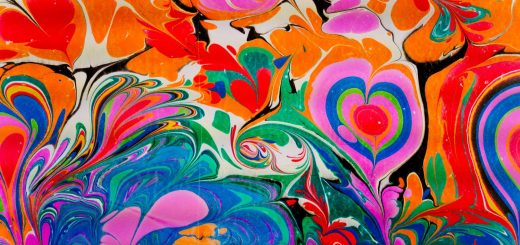The Yin-Yang Principle: Interconnected Opposites

Before diving in, please note: This post is for informational purposes only. If you’d like to know more about how we approach topics, feel free to check out our friendly Disclaimer Page.
Hey there, amazing readers! 🖐️ Just a quick note: yes, we know there are a lot of ads here. Trust us, we get it—it’s not the prettiest look, but they help us keep this blog alive and kicking. Those pesky little ads cover the costs of all the behind-the-scenes magic, from hosting and tech stuff to creating content we hope you’ll love.
We’re committed to delivering quality posts, and your support (even just sticking around despite the ads) means everything to us. So, bear with us, and thanks for helping us keep the good vibes rolling. Now, on to the fun stuff! 😉
TRANSLATE BUTTON AT THE END OF THE ARTICLE
A Quick Overview
The Yin-Yang Principle, originating from Chinese philosophy, represents the concept of interconnected opposites in the universe.
This ancient idea emphasizes the balance and harmony between seemingly contrasting forces.
Yin symbolizes darkness, passivity, and femininity, while Yang represents light, activity, and masculinity.
Together, these opposing forces create a dynamic equilibrium essential for the universe’s existence.
Understanding the Yin-Yang Principle can help individuals navigate life’s complexities and achieve harmony in various aspects of their lives.
Understanding the Yin-Yang Principle
The Yin-Yang Principle is a fundamental concept in Chinese philosophy, representing the duality of existence.
Yin and Yang are complementary opposites that interact to create the natural world’s balance.
Yin is associated with qualities such as darkness, cold, and stillness, while Yang embodies traits like light, warmth, and movement.
The interplay between Yin and Yang is dynamic, with neither force being superior to the other.
Instead, they are interconnected, constantly transforming into one another in a never-ending cycle.
Origins of Yin and Yang
The origins of Yin and Yang can be traced back to ancient Chinese cosmology and philosophy.
The concept first appeared in the "Yijing" or "Book of Changes," an influential text that dates back thousands of years.
According to Chinese mythology, Yin and Yang emerged from the primordial chaos, symbolizing the dualistic nature of the universe.
The balance between Yin and Yang is believed to be essential for maintaining harmony and order in the cosmos.
The Concept of Interconnected Opposites
The Yin-Yang Principle emphasizes the interconnectedness of opposites and the necessity of their balanced coexistence.
In Chinese philosophy, Yin and Yang are not seen as conflicting forces but rather as complementary aspects of a whole.
Just as day transitions into night and summer into winter, Yin and Yang flow into each other, creating a harmonious rhythm.
This concept underscores the idea that opposites are not separate entities but interconnected parts of a unified whole.
Symbolism of the Yin-Yang Symbol
The Yin-Yang symbol, also known as the Taijitu, visually represents the concept of interconnected opposites.
The circular emblem is divided into two halves, one black (Yin) and the other white (Yang), with a small dot of the opposite color in each section.
This symbol illustrates the dynamic relationship between Yin and Yang, demonstrating how each force contains a seed of its counterpart.
The swirling shape of the Taijitu signifies the continuous movement and transformation of these opposing forces.
Balancing Yin and Yang in Life
Achieving balance between Yin and Yang is essential for overall well-being and harmony.
In daily life, individuals can strive to incorporate elements of both Yin and Yang to maintain equilibrium.
For instance, balancing periods of activity and rest, work and play, and solitude and social interaction can help cultivate a sense of harmony.
By recognizing and honoring the interplay of Yin and Yang in their lives, individuals can navigate challenges with greater ease and grace.
Examples of Yin and Yang in Nature
Yin and Yang can be observed in various aspects of nature, illustrating their interconnected relationship.
Examples of Yin in nature include the moon, darkness, water, and winter, while examples of Yang include the sun, light, fire, and summer.
These contrasting elements coexist harmoniously in the natural world, demonstrating the cyclical nature of Yin and Yang.
The changing seasons, the ebb and flow of tides, and the cycle of day and night all reflect the dynamic interplay between these opposing forces.
Yin and Yang in Traditional Chinese Medicine
In Traditional Chinese Medicine (TCM), the concept of Yin and Yang is central to understanding health and disease.
The body is believed to be in a state of balance when Yin and Yang are harmonized, resulting in optimal well-being.
Imbalances in Yin and Yang can lead to illness, and TCM treatments aim to restore equilibrium through techniques such as acupuncture, herbal medicine, and qigong.
By addressing the dynamic interplay of Yin and Yang within the body, TCM practitioners seek to promote healing and overall wellness.
Applying the Yin-Yang Principle in Relationships
The Yin-Yang Principle can also be applied to relationships, emphasizing the importance of balance and harmony.
In interpersonal dynamics, individuals can strive to embody qualities of both Yin and Yang to create a mutually supportive and fulfilling connection.
For example, listening and empathy (Yin) can complement assertiveness and action (Yang) in a relationship.
By recognizing and valuing the unique strengths of each partner, couples can cultivate a harmonious and resilient bond.
The Philosophy of Yin and Yang in Taoism
In Taoism, an ancient Chinese philosophical tradition, the Yin-Yang Principle is closely aligned with the concept of Tao, or the Way.
Taoism emphasizes living in harmony with the natural order of the universe, recognizing the interconnectedness of all things.
The balance of Yin and Yang is seen as essential for achieving inner peace and spiritual enlightenment.
By following the Tao and embracing the duality of Yin and Yang, individuals can align themselves with the flow of life and find greater fulfillment.
Achieving Harmony through Yin and Yang
Harmony and balance can be achieved by embracing the duality of Yin and Yang in all aspects of life.
By recognizing the interdependence of opposites and striving for equilibrium, individuals can cultivate a sense of peace and wholeness.
Embracing both Yin’s receptive, nurturing qualities and Yang’s active, assertive traits allows individuals to navigate life’s challenges with resilience and grace.
By honoring the dynamic interplay of Yin and Yang, individuals can create a harmonious existence in tune with the natural rhythms of the universe.
Embracing the Duality of Yin and Yang
The duality of Yin and Yang invites individuals to embrace the complexity of existence and appreciate the interconnectedness of opposites.
Rather than viewing opposites as conflicting forces, the Yin-Yang Principle encourages acceptance and integration of all aspects of life.
Embracing duality allows for a more nuanced understanding of the world and promotes a deeper sense of connection to oneself and others.
By acknowledging and honoring both Yin and Yang within themselves, individuals can cultivate a sense of wholeness and balance.
Integrating Yin and Yang for Well-Being
Integrating Yin and Yang for well-being involves recognizing the unique qualities of each force and finding ways to incorporate them into daily life.
Whether through meditation, exercise, creative expression, or self-care practices, individuals can cultivate a harmonious balance of Yin and Yang energies.
By listening to their bodies’ needs, honoring their emotions, and nurturing their spirits, individuals can create a sense of inner harmony and vitality.
By integrating Yin and Yang for well-being, individuals can live authentically and fully in alignment with the natural flow of the universe.
Conclusion
The Yin-Yang Principle offers a profound understanding of the interconnected nature of opposites and the importance of balance and harmony in life.
By embracing the duality of Yin and Yang, individuals can navigate challenges with grace and cultivate a sense of wholeness and well-being.
Whether in nature, relationships, health, or spirituality, the dynamic interplay of Yin and Yang provides a guiding principle for achieving harmony and fulfillment.
By integrating Yin and Yang in all aspects of life, individuals can align themselves with the natural rhythms of the universe and experience a deeper sense of connection and peace.

The Enlightenment Journey is a remarkable collection of writings authored by a distinguished group of experts in the fields of spirituality, new age, and esoteric knowledge.
This anthology features a diverse assembly of well-experienced authors who bring their profound insights and credible perspectives to the forefront.
Each contributor possesses a wealth of knowledge and wisdom, making them authorities in their respective domains.
Together, they offer readers a transformative journey into the realms of spiritual growth, self-discovery, and esoteric enlightenment.
The Enlightenment Journey is a testament to the collective expertise of these luminaries, providing readers with a rich tapestry of ideas and information to illuminate their spiritual path.
Our Diverse Expertise 🌟
While our primary focus is on spirituality and esotericism, we are equally passionate about exploring a wide range of other topics and niches 🌍📚. Our experienced team is dedicated to delivering high-quality, informative content across various subjects ✨.
To ensure we provide the most accurate and valuable insights, we collaborate with trusted experts in their respective domains 🧑🏫👩🏫. This allows us to offer well-rounded perspectives and knowledge to our readers.
Our blog originally focused on spirituality and metaphysics, but we’ve since expanded to cover a wide range of niches. Don’t worry—we continue to publish a lot of articles on spirituality! Frequently visit our blog to explore our diverse content and stay tuned for more insightful reads.





